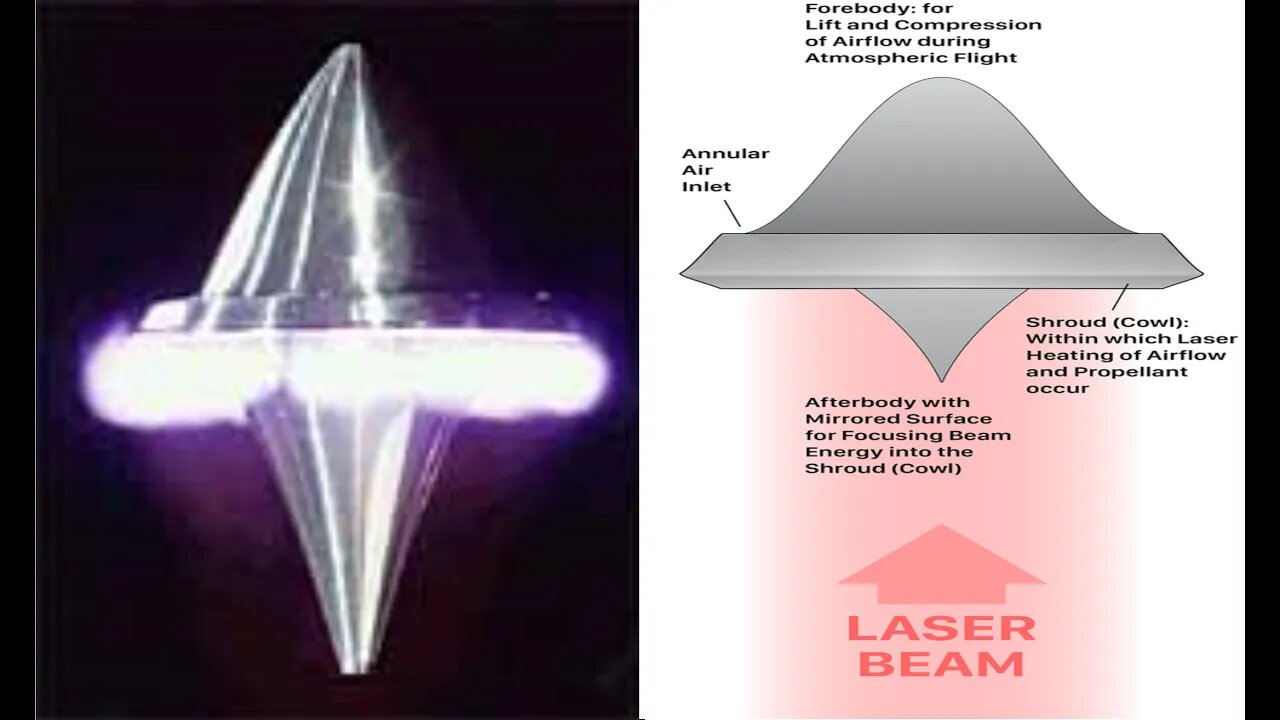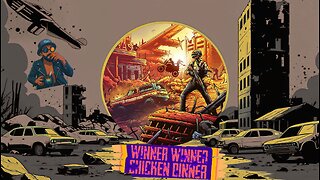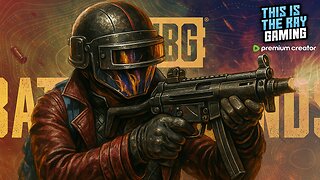Premium Only Content

Laser Powered Propulsion Spacecraft Demonstration, Light craft the goal of TTSA
The Lightcraft is a space- or air-vehicle driven by beam-powered propulsion, the energy source powering the craft being external. It was conceptualized by aerospace engineering professor Leik Myrabo at Rensselaer Polytechnic Institute in 1976, who developed the concept further with working prototypes, funded in the 1980s by the Strategic Defense Initiative organization, and the decade after by the Advanced Concept Division of the US Air Force AFRL, NASA's MFSC and the Lawrence Livermore National Laboratory.
When a Lightcraft is in the atmosphere, air is used as the propellant material (reaction mass). In space, it would need to provide the propellant material from onboard tanks or from an ablative solid. By leaving the vehicle's power source on the ground and by using ambient atmosphere as a reaction mass for much of its ascent, a Lightcraft could potentially be capable of delivering a very large percentage of its launch mass to orbit as an SSTO, a difficult task for chemical rockets. As such, a Lightcraft is distinct from a solar sail because it is dependent on the expansion of reaction mass to accelerate rather than being accelerated by light pressure alone. Within the atmosphere, the Lightcraft propulsion is dependent on the external laser power only, so propulsive power is not limited to that generated by usual on-board machinery (i.e. rockets).
-
 LIVE
LIVE
Cancel This Podcast
6 hours ago $0.57 earnedROLE-PLAYING GRINDS: FINAL FANTASY XIV, DRAGON QUEST X & OCTOPATH COTC - CTP GAMING MONDAYS!
314 watching -
 7:25:37
7:25:37
FoeDubb
7 hours ago🏰KINGDOM MENU :🎮LATE NITE PUBG 🤣MOST LIKELY A BAD IDEA DILLY DILLY!!!
11.2K -
 1:34:52
1:34:52
Glenn Greenwald
8 hours agoIs There Evidence of Epstein's Ties to Israel? Yes: Ample. Brazil's Chief Censor Orders Rumble to Ban US Citizen and Turn Over Data | SYSTEM UPDATE #486
151K129 -
 2:20:40
2:20:40
GamerGril
2 hours agoMarvel Rivals Monday | Battle Of The Bronze
10.6K3 -
 46:08
46:08
FanatikGaming
2 hours ago $0.71 earned💪Monday Motivation🦾 - Legends Never DIE!💯💯 ATWU - BTTB!☝️🔥
14.8K2 -
 LIVE
LIVE
WolfLinksShadow
2 hours agoMario Kart Monday & More!
192 watching -
 58:16
58:16
Redacted News
11 hours agoThe Secret Space Program IS REAL and this Whistleblower is EXPOSING all of it
79K257 -
 3:37:54
3:37:54
This is the Ray Gaming
4 hours ago $0.44 earnedHead Shots and Heart Breaks | Rumble Premium Creator
11.4K1 -
 3:45:47
3:45:47
tangodelta
5 hours agoGray Zone Warfare - Lamang Real Estate
13.6K1 -
 2:08:28
2:08:28
megimu32
5 hours agoOTS: Movies That Scarred Us… and Made Us Scream HELL YEA!
10.6K5